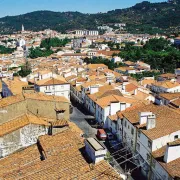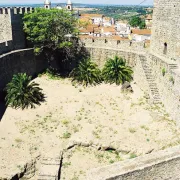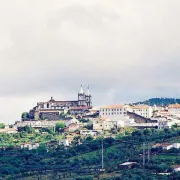
Visiting Portalegre is not so much about visiting one interesting town, but about visiting a whole cluster of northern Alentejan towns, each with their own tale to tell, and with Portalegre at their centre. The region contains a wealth of historical monuments and anecdotes, awe-inspiring views from the fortified hilltop towns and a good smattering of prehistoric treasures to boot. For the energetic or hot, a host of dams (barragem) offer the perfect opportunity for water sports and a cooling swim in the hot summer months of the Portuguese interior.
Firstly, Portalegre is found near the Spanish border on the green slopes of the São Mamede mountains, which now constitute a national park complete with marked paths for walkers and a wealth of interesting inhabitants from wild boar and red deer to vultures and eagles. At over 3000 feet, the peak of São Mamede is a short drive away along a road full of bends and spectacular views. The town’s serious fortifications have seen much action, withholding a five month siege by Dom Dinis in the 13th century and many others in the meantime. During the Peninsular War of the early 1800s, British troops on the Portuguese side were based here.

Beyond military edifices, Portalegre has an array of religious ones dating from the 13th century. The São Francisco monastery, along with that of Santa Clara and São Bernardo all have their charm and the grand Renaissance and Baroque houses still tell tales of past splendour and importance.
The acclaimed 20th century poet José Régio is celebrated in the museum devoted to his writing and his collection of mainly religious paintings. The town museum holds a collection of sacred art and some excellent examples of Portuguese ceramics. However, the craft most associated with this town is that of rich textiles. Tapestries, silk cloth and religious tableaux have all been created here par excellence over the years, many based on paintings and so earning great acclaim for artistic and technical merit. The Tapestry Museum displays work from the 17th century to nowadays. Another product typical not only of Portalegre but of the Alentejo in general is cork, and the Robinson Cork Factory, set up here in the 1800s by an English entrepreneur, still offers guided tours and a chance to buy a whole range of products fashioned out of this so-Portuguese material. Its two tall chimneys still dominate the skyline.
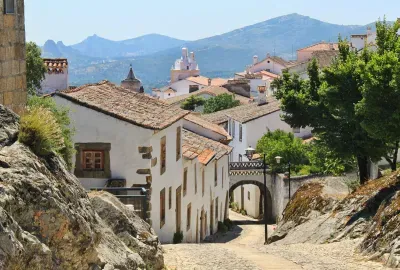
Of the surrounding towns of interest, Marvão stands out. One of the few remaining towns nestling entirely inside ancient walls, from its lofty position it boasts extensive views of the surrounding hills and fertile lands that lie towards the Spanish border only 4 miles away. One has a feeling of stepping back in time here, so well-preserved are the buildings, and the castle, built in the 13th century by Dom Dinis, retains it original keep, cisterns and some cannons still pointing towards Spain. Near here is also the first golf club in this part of Portugal, with numerous lakes and bunkers.
Castelo de Vide is another well-kept border town complete with impressive ramparts, ruined castle, panoramic views and natural spring waters, which have been revered as curative for centuries. Here is also a tangle of cobbled alleys which make up the ancient Jewish district, amongst them a 13th century synagogue. The diminutive chapel of Nossa Senhora da Alegria, within the boundary of the castle walls, contains a display of attractive floral tiles of up to 400 years in age and the nearby menhir of Meada is apparently the tallest in the Iberian Peninsula at over 7 metres in height. In fact the whole area is rich in megalithic remains, with around fifty dolmens and menhirs to behold.
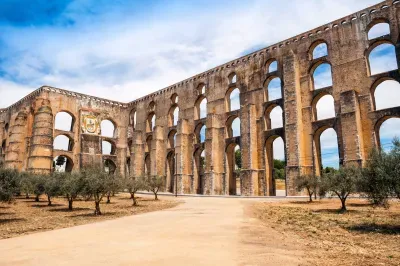
Other towns worthy of a visit include Elvas with its crowning Roman-Moorish castle and lengthy aqueduct which encircles the hillside settlement. Furthermore, Alter do Chão is the homeland of the world-renowned Alter Real Lusitanian breed of horse, honoured in the admirable equestrian museum there.




